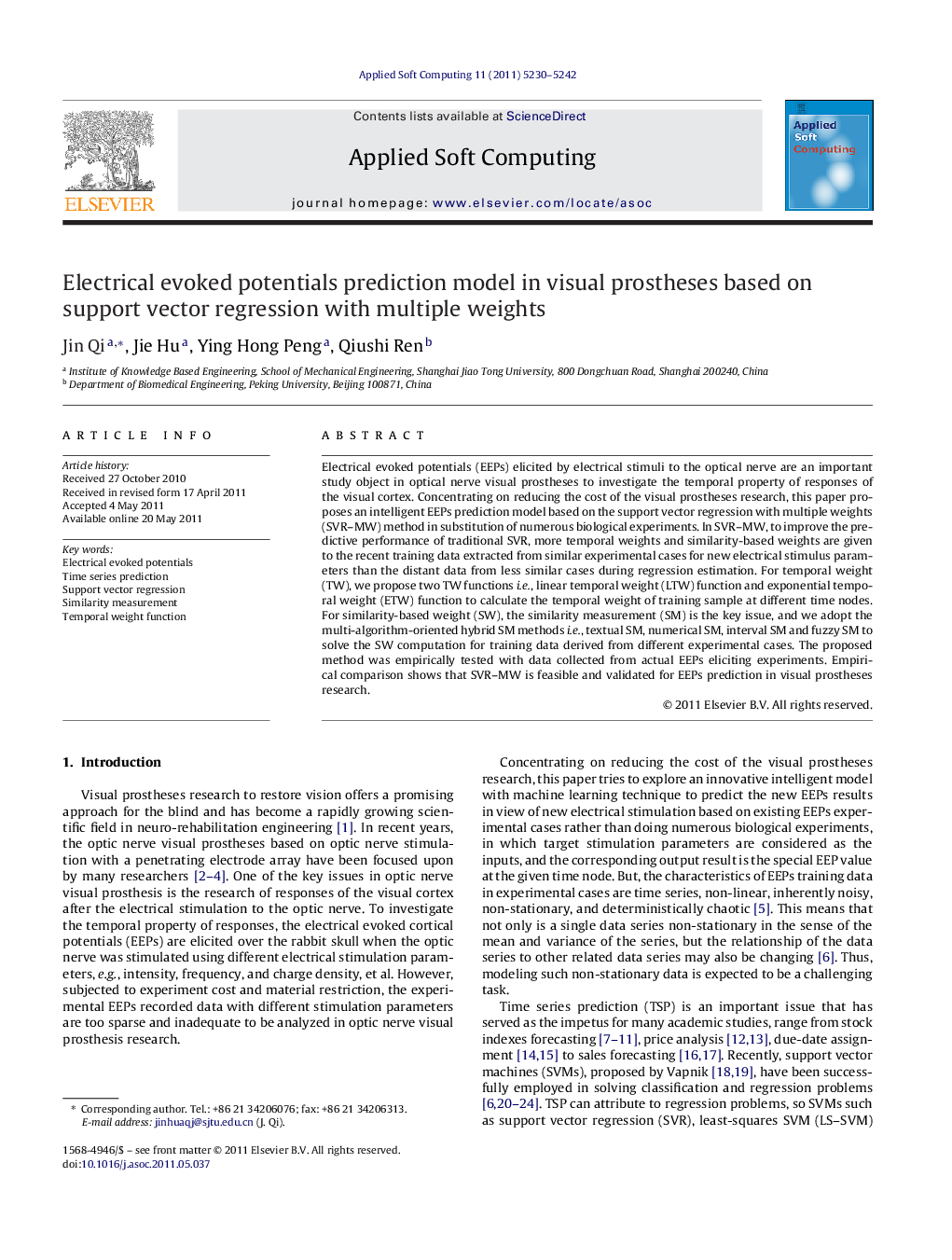| Article ID | Journal | Published Year | Pages | File Type |
|---|---|---|---|---|
| 496677 | Applied Soft Computing | 2011 | 13 Pages |
Electrical evoked potentials (EEPs) elicited by electrical stimuli to the optical nerve are an important study object in optical nerve visual prostheses to investigate the temporal property of responses of the visual cortex. Concentrating on reducing the cost of the visual prostheses research, this paper proposes an intelligent EEPs prediction model based on the support vector regression with multiple weights (SVR–MW) method in substitution of numerous biological experiments. In SVR–MW, to improve the predictive performance of traditional SVR, more temporal weights and similarity-based weights are given to the recent training data extracted from similar experimental cases for new electrical stimulus parameters than the distant data from less similar cases during regression estimation. For temporal weight (TW), we propose two TW functions i.e., linear temporal weight (LTW) function and exponential temporal weight (ETW) function to calculate the temporal weight of training sample at different time nodes. For similarity-based weight (SW), the similarity measurement (SM) is the key issue, and we adopt the multi-algorithm-oriented hybrid SM methods i.e., textual SM, numerical SM, interval SM and fuzzy SM to solve the SW computation for training data derived from different experimental cases. The proposed method was empirically tested with data collected from actual EEPs eliciting experiments. Empirical comparison shows that SVR–MW is feasible and validated for EEPs prediction in visual prostheses research.
